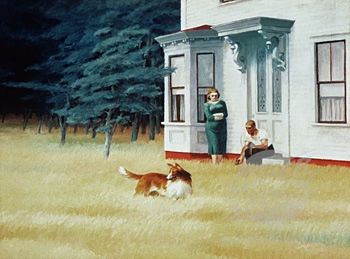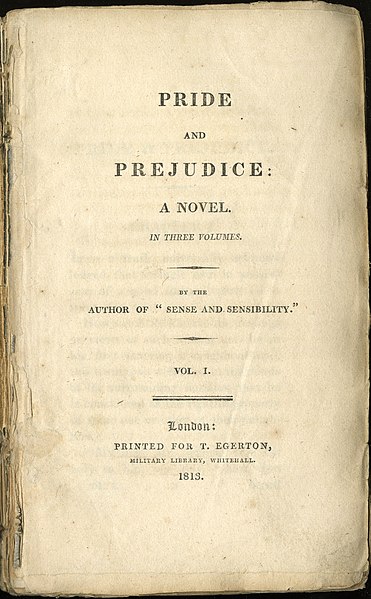WORKHOUSE
WORKHOUSE:
Définition d'un Workhouse (foyer de travail):
était un lieu qui accueillait au Royaume-Uni, les personnes incapables de subvenir seules à leur besoin. Ils pouvaient y vivre en échange de leur travail.
Ces foyers furent officiellement crées en 1834, par le Poor Law Amendment Act, mais existaient déjà depuis la old poor law de 1601.
Repas de la Workhouse:
Les registres de la Workhouse datant du 19ème siècle décrivent un régime austère : Les petits-déjeuners et soupers étaient composés de céréales ou de pain. Au déjeuner, on servait de la viande bouillie et des pommes de terre, ou du bouillon et du pain. Le samedi, les pensionnaires avaient droit à du pudding.
Les hommes et les femmes étaient séparés de leurs enfants et ils perdaient tout droit d'éducation sur eux. Ils étaient souvent de force envoyés en apprentissage sans la permission ou la connaissance de leurs parents. Les internés ont abandonné leurs propres vêtements et ont porté un uniforme distinctif.
A plan of a workhouse for 200 inmates:
andover: CLICK HER
Men and women were segregated and children were separated from their parents. Aged pauper couples who by definition were neither idle nor criminal were not allowed to share a bedroom. By entering a workhouse paupers were held to have forfeited responsibility for their children. Education was provided but pauper children were often forcibly apprenticed without the permission or knowledge of their parents. Inmates surrendered their own clothes and wore a distinctive uniform.
The workhouse system was the mainstay of poor relief through the Victorian era across the UK. Overall they were places of dread to the labouring and indigent poor. Reformers like Charles Booth and Seebohm Rowntree revealed that there was widespread poverty in Victorian Britain and that the workhouse system was not helping. Books such as Charles Dicken's Oliver Twist highlighted workhouse abuse.
Some workhouse masters embezzled the money intended for blankets, food and other important items for their own personal use.
Visitors reported rooms full of sick or elderly inmates with threadbare blankets and the windows wide open to the freezing weather.Workhouse infirmaries did steadily improve.
Abolition:
The workhouse system underwent several administrative reforms and was abolished on 1st April 1930, being replaced by other social legislation for the unemployed and retired. Despite abolition, many workhouses continued into the 1950s under the local County Council.
FOOD IN THE WORKHOUSE:
Until 1842 all meals were taken in silence, and no cutlery was provided - inmates had to use their fingers. And the meals were kept dull, predictable and tasteless.
There were 6 official diets which were so meagre that they were described as "a slow process of starvation". A typical diet was: BREAKFAST 6 oz bread; DINNER 4 oz bacon and 3 oz bread or potatoes; SUPPER 6 oz bread and 2 oz cheese. [Note, oz is short for ounce, 1 ounce = 25 grams].
The official ration in HM Prisons was 292 ounces of food a week. The workhouse diet was between 137 and 182 ounces a week only.
A VERY SHORT HISTORY OF THE WORKHOUSE:
The first legislation for providing relief to the poor were the Acts of 1572, 1597 and 1601.
The 1601 POOR LAW ACT gave responsibility to local parishes for looking after very poor people, who were able to claim assistance from the parish's householders. Poor people were able to live at home when they were getting parish relief.
With the 1834 POOR LAW AMENDMENT ACT people receiving help from the parish had to live in a workhouse and could no longer live at home. In return for parish relief, they would be made to work hard in the workhouse; which is how the term originated. The Act also allowed parishes to club together into unions responsible for building workhouses and for running them. In the next few years hundreds of workhouses were built at a typical cost to the union of £5,000.
By 1926 there were 226,000 inmates and around 600 workhouses with an average population of about 400 inmates each.
- The 1929 LOCAL GOVERNMENT ACT abolished workhouses and their responsibilites were given to county borough & county councils.













 It's my prefer film because it's a story of love enter Elizabeth "Lizzie" Bennet and Mrs Darcy. At the end of XVIIIè century in England, Mr and Mrs Bennet would bridegroom her five girls because the dosmene dilapidated. Jane seem prepared at be married Mr Bingley, a men wealthy who settled far. Lizzie, make knowledge of the pride Darcy, a friend of Mr Bingley.
It's my prefer film because it's a story of love enter Elizabeth "Lizzie" Bennet and Mrs Darcy. At the end of XVIIIè century in England, Mr and Mrs Bennet would bridegroom her five girls because the dosmene dilapidated. Jane seem prepared at be married Mr Bingley, a men wealthy who settled far. Lizzie, make knowledge of the pride Darcy, a friend of Mr Bingley. 


